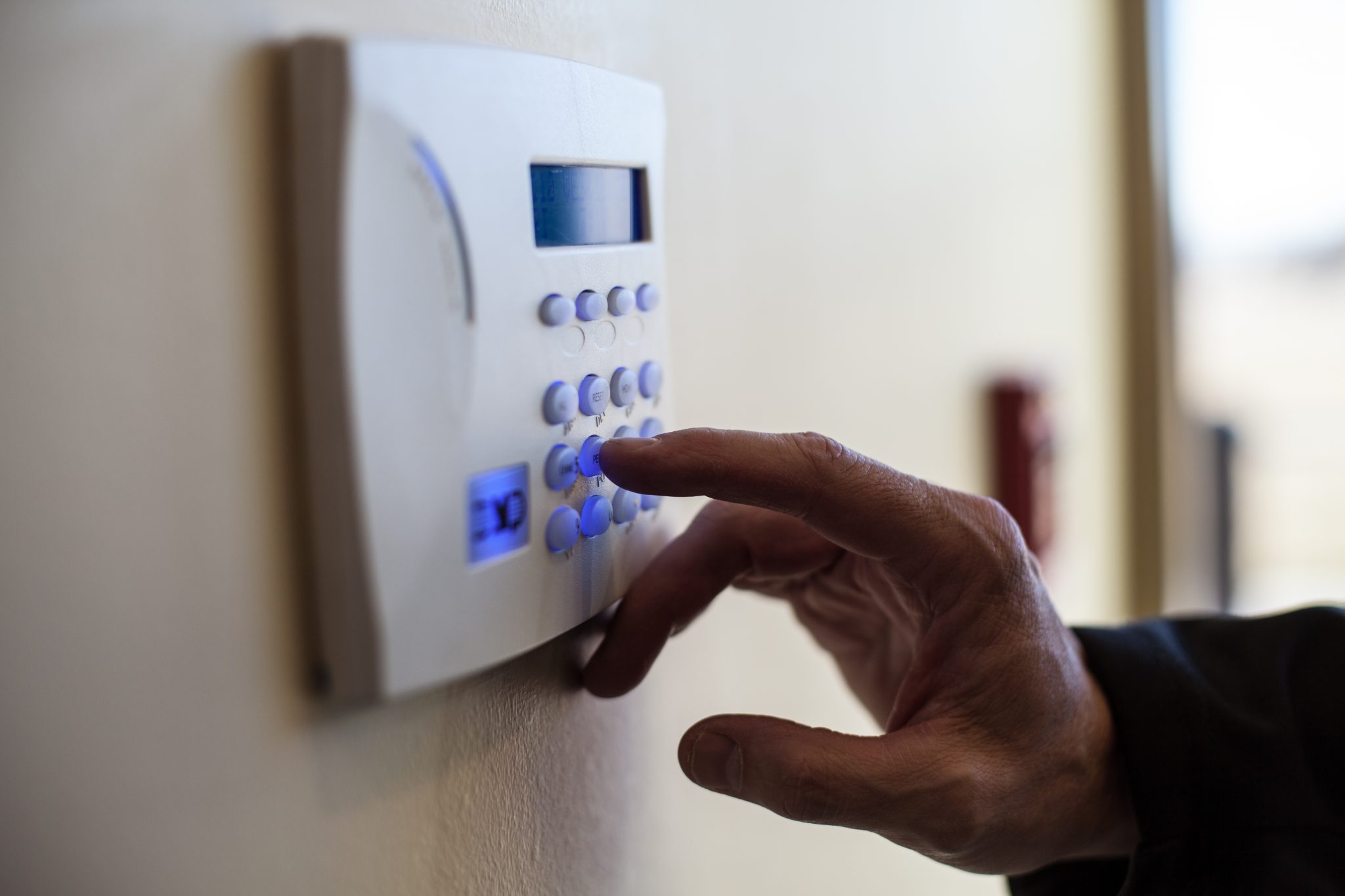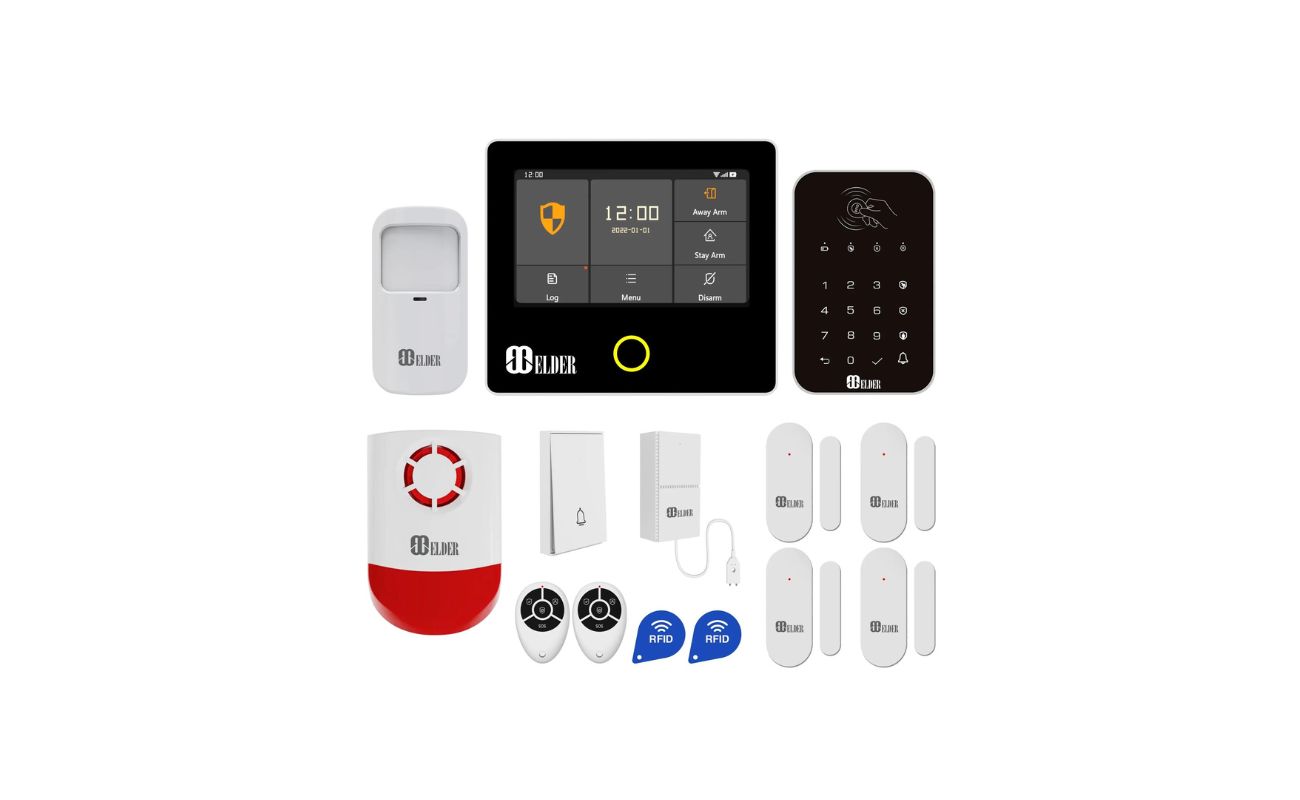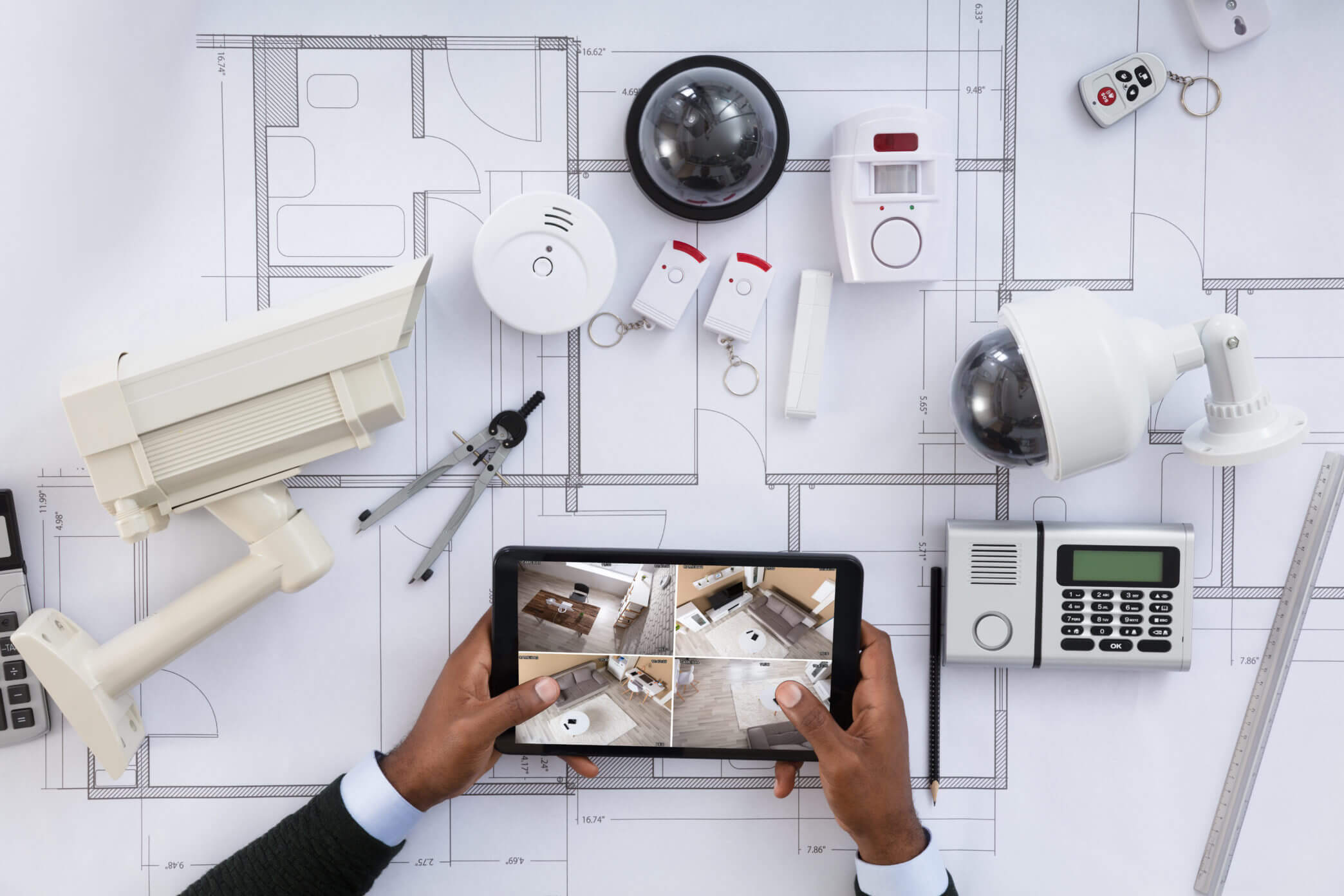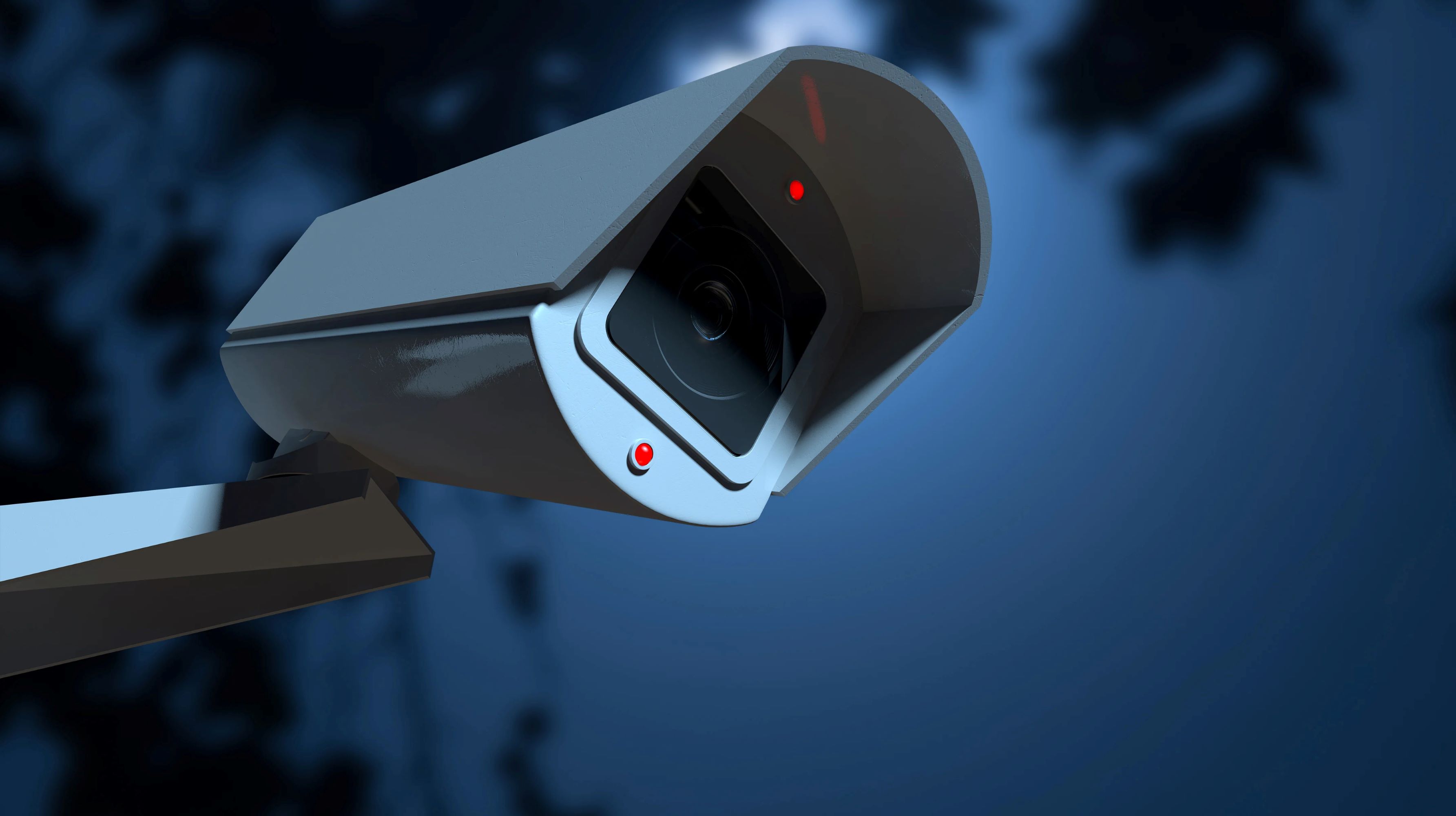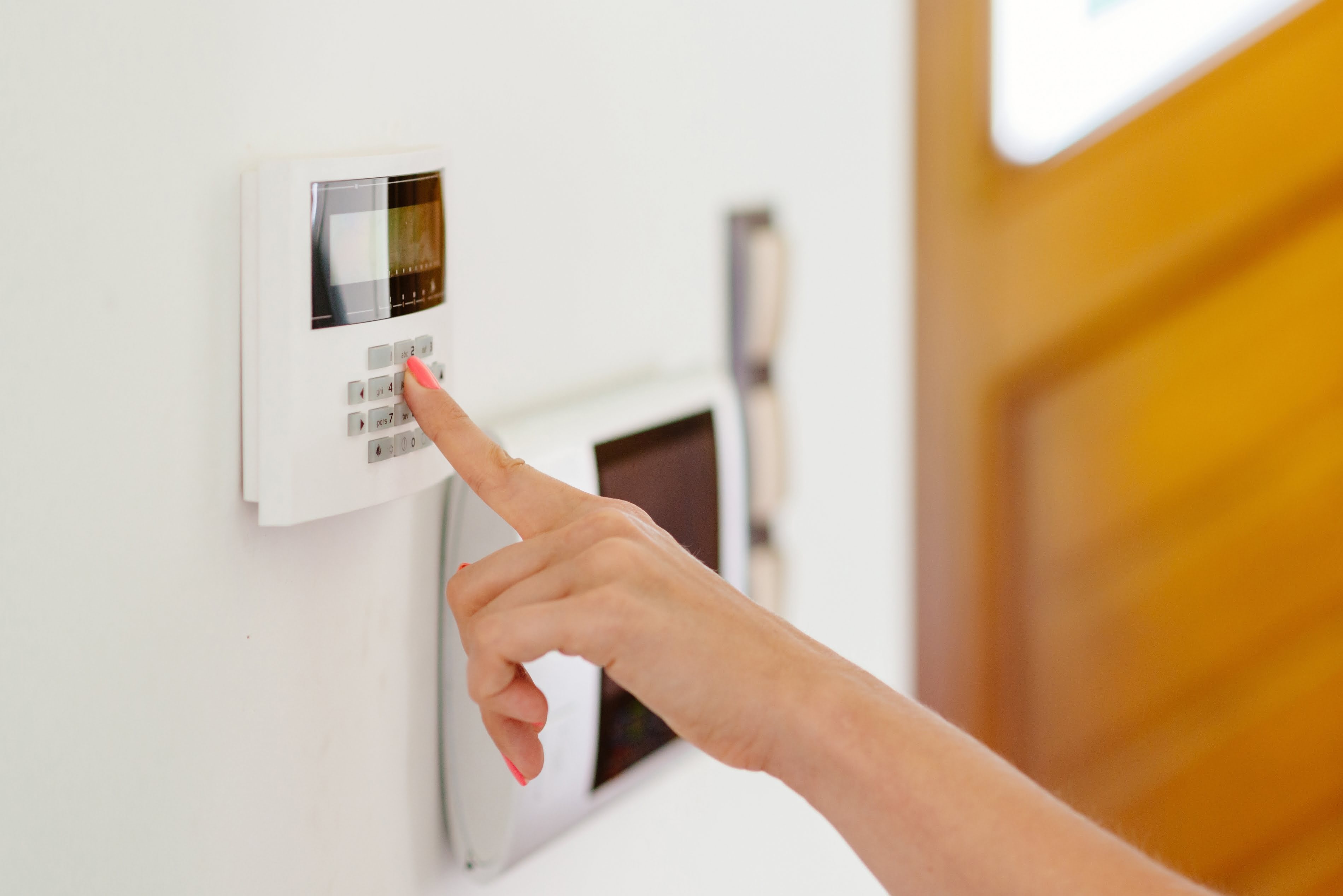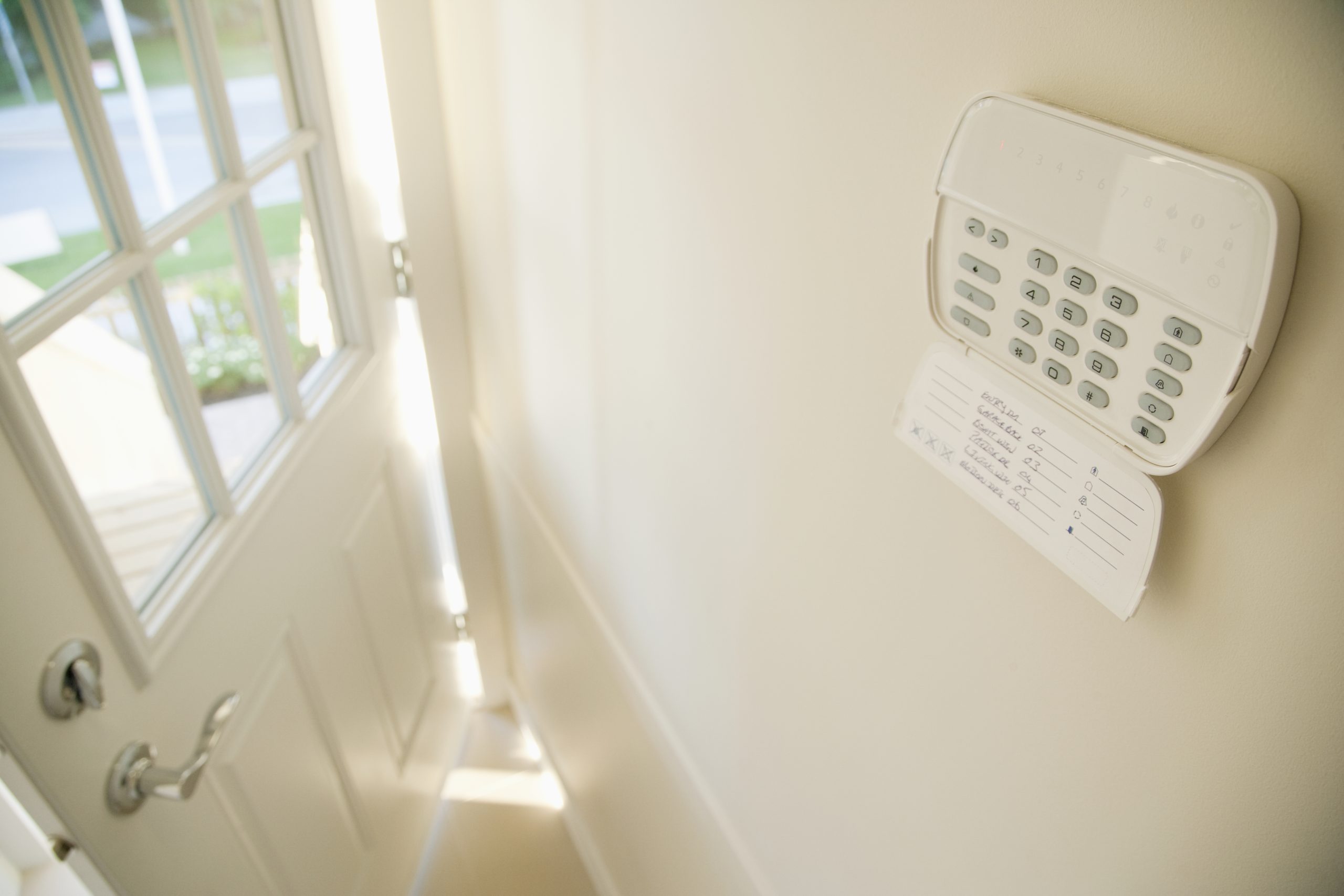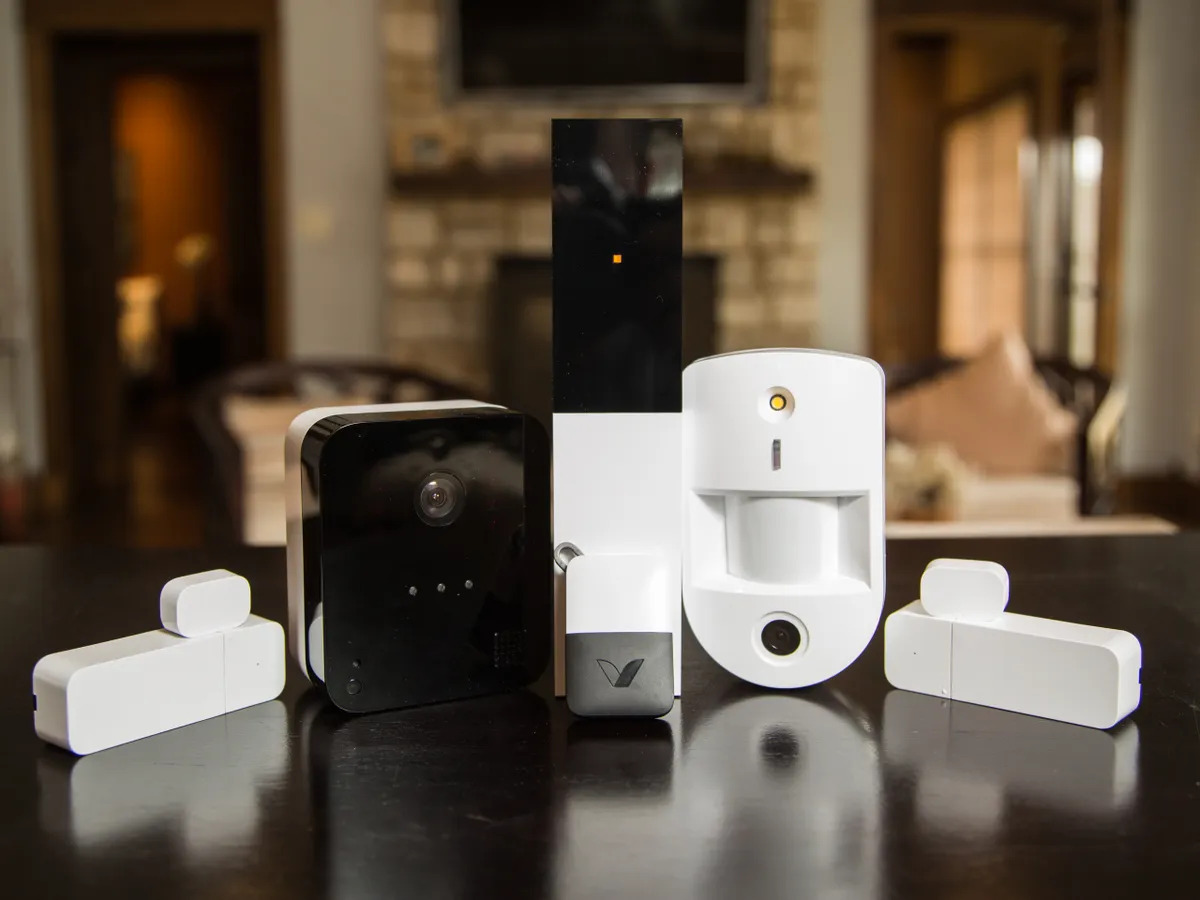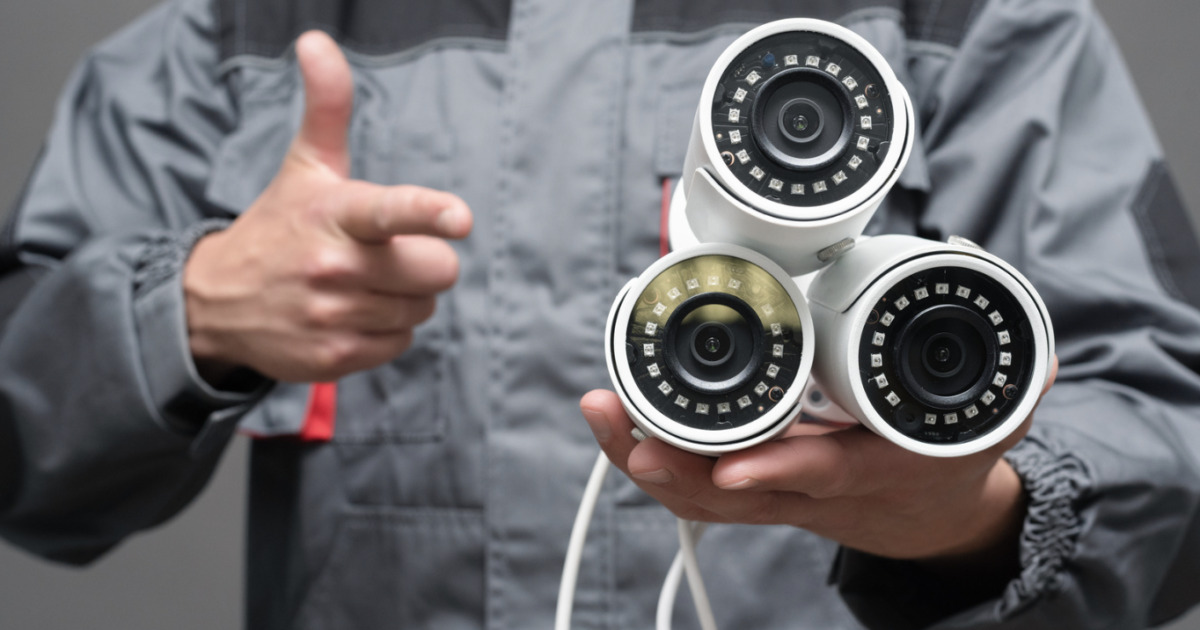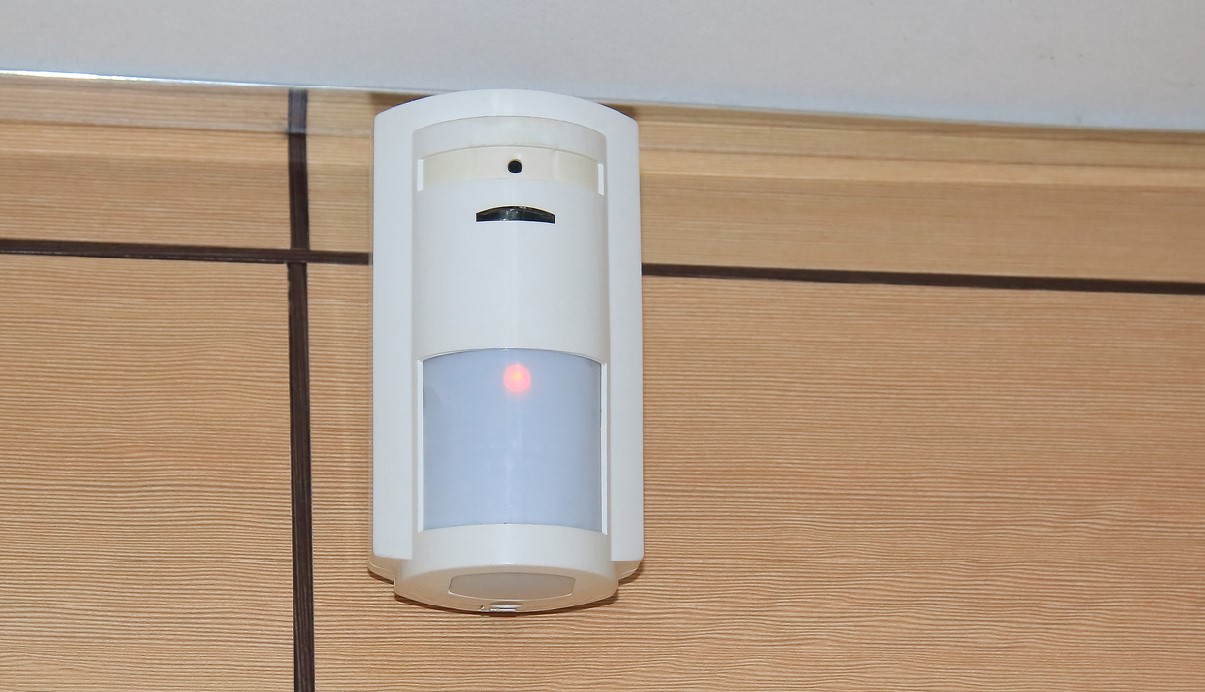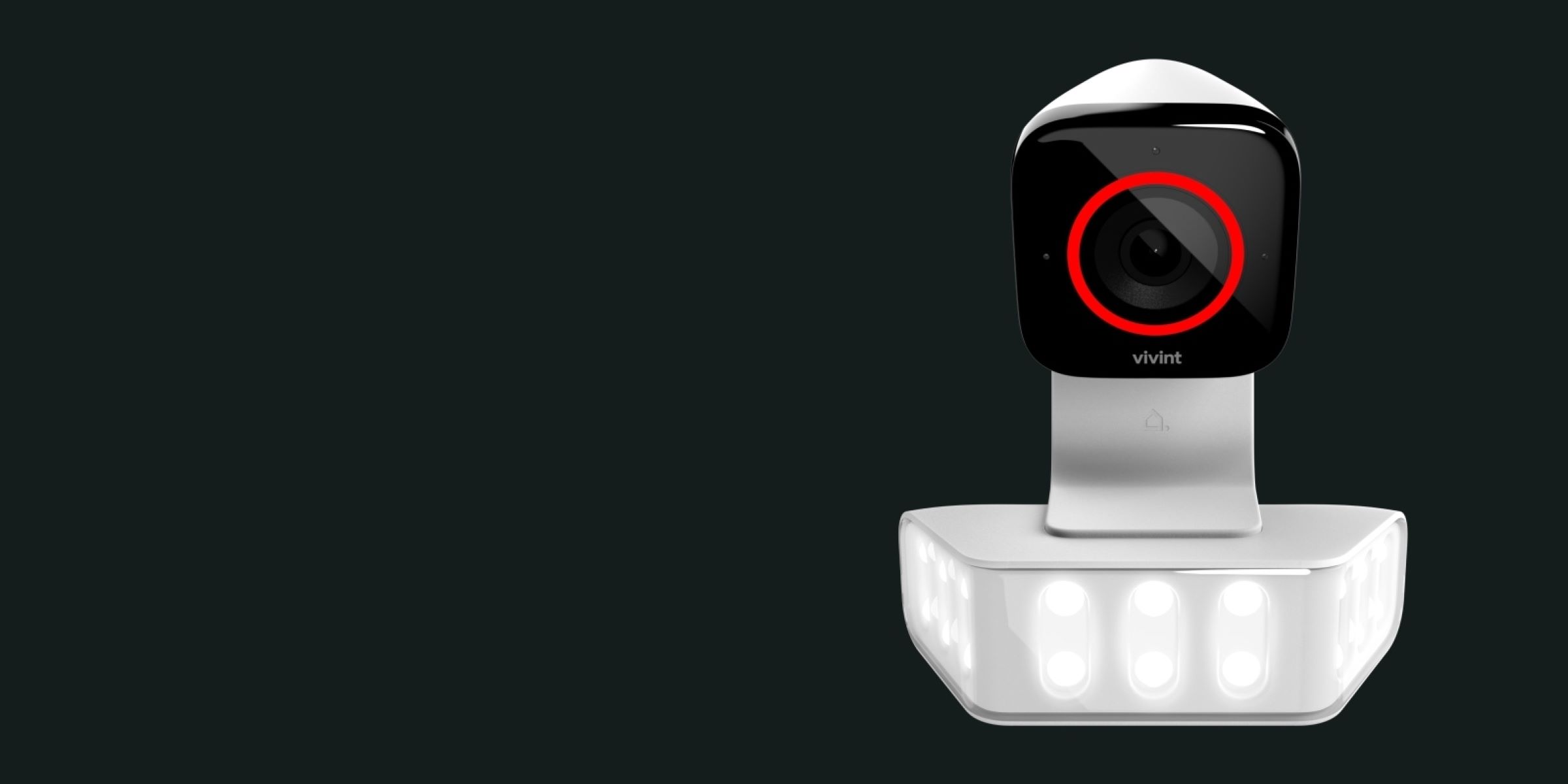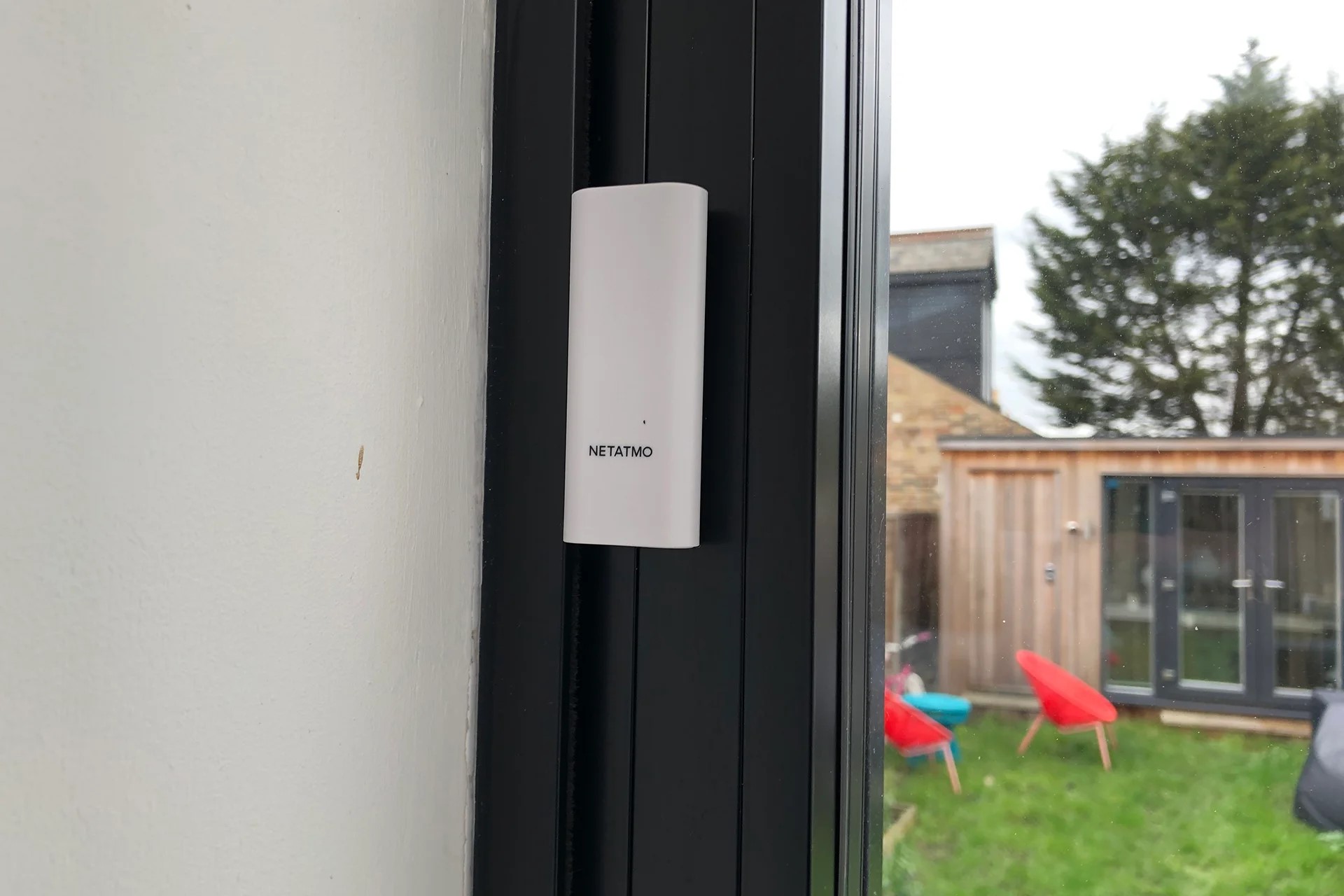Home>Home Security and Surveillance>How To Select A Home Surveillance System
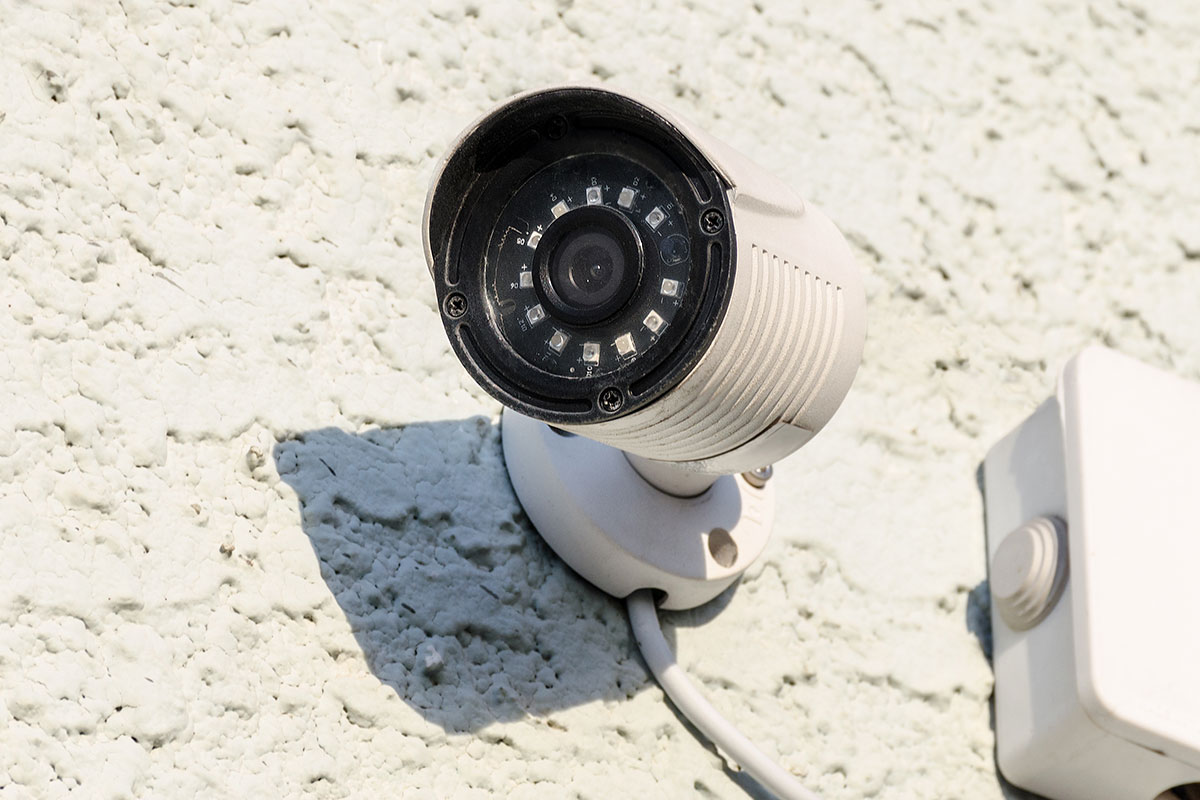

Home Security and Surveillance
How To Select A Home Surveillance System
Modified: August 27, 2024
Learn how to choose the perfect home surveillance system to protect your property and loved ones. Find the best options for home security and surveillance.
(Many of the links in this article redirect to a specific reviewed product. Your purchase of these products through affiliate links helps to generate commission for Storables.com, at no extra cost. Learn more)
Introduction
Welcome to the world of home security and surveillance. We live in a time where ensuring the safety of our homes and loved ones is a top priority. With advancements in technology, there are now various home surveillance systems available to provide us with the peace of mind we seek.
Choosing the right home surveillance system can be a daunting task, especially with the plethora of options available in the market. It requires careful consideration of factors such as the size of your home, your budget, and the specific needs and preferences you have in mind.
In this article, we will guide you through the process of selecting a home surveillance system that best fits your requirements. We will explore the different types of home surveillance systems available, discuss the advantages of wired and wireless systems, highlight key features to consider, delve into camera options, storage solutions, and budget considerations. We’ll also touch on the importance of proper installation and maintenance.
By the end of this article, you will have a solid understanding of what to look for in a home surveillance system and be well-equipped to make an informed decision.
Key Takeaways:
- Choose a home surveillance system based on your home’s size, layout, and specific needs. Consider factors like indoor vs. outdoor surveillance, remote access, and integration with smart home devices to ensure optimal security.
- Balance your budget and security needs when selecting a home surveillance system. Evaluate system costs, installation expenses, and storage options to find a reliable and affordable solution for your home’s safety.
Factors to Consider Before Selecting a Home Surveillance System
Before diving into the world of home surveillance systems, it’s essential to consider a few factors that will help guide your decision-making process. By addressing these key factors, you can ensure that the system you choose is tailored to your specific needs and requirements.
1. Home size and layout: Consider the size and layout of your home. Do you have a large, multi-story house or a smaller apartment? This will determine the number of cameras and sensors you’ll need, as well as the range and coverage required to monitor the entire property effectively.
2. Indoor vs. outdoor surveillance: Determine if you need surveillance cameras for both indoor and outdoor areas. Outdoor cameras should be weatherproof and have infrared capabilities to capture clear footage in low-light conditions. Indoor cameras might focus more on capturing high-quality video and audio.
3. Purpose of surveillance: Clearly define the purpose of your surveillance system. Are you primarily concerned about deterring burglars and intruders, or do you also want to monitor household activities or keep an eye on children and pets? Knowing the primary purpose will help you choose the right features and functionalities.
4. Remote access and monitoring: Decide whether remote access and monitoring are important to you. With advancements in technology, many surveillance systems allow you to access live footage remotely from your smartphone or computer. This can provide peace of mind when you’re away from home.
5. Integration with other smart home devices: Consider whether you want your surveillance system to integrate with other smart home devices, such as smart locks, lights, or alarms. This allows for a cohesive and synchronized home security system.
6. Professional monitoring vs. self-monitoring: Determine if you prefer professional monitoring through a security company or if you are comfortable with self-monitoring. Professional monitoring can provide an added layer of security and peace of mind, but it comes with a monthly subscription fee.
7. Budget: Set a budget for your home surveillance system. Surveillance systems can vary greatly in cost, depending on the features, number of cameras, and additional components. It’s important to strike a balance between your desired features and your allocated budget.
By considering these factors before selecting a home surveillance system, you can narrow down your options and find a system that aligns with your specific needs and preferences. Remember that each home is unique, so what works for one person may not work for another. Take the time to evaluate what is important to you and choose a system that provides the security and peace of mind you deserve.
Types of Home Surveillance Systems
When it comes to home surveillance systems, there are several types to choose from, each with its own unique advantages and features. Understanding these different types will help you make an informed decision about which system is best suited for your home security needs. Let’s explore the most common types of home surveillance systems:
1. Traditional Analog Systems: Analog surveillance systems were the first to be widely used in homes. They consist of analog cameras connected through coaxial cables to a Digital Video Recorder (DVR). These systems offer decent image quality and can be cost-effective; however, they often lack advanced features like remote access and high-definition video.
2. High Definition-Over-Coax (HDCVI, HDTVI) Systems: HDCVI and HDTVI systems are newer variants of analog systems that offer high-definition video resolution. These systems allow for high-quality video footage without the need for complex IP networking. They are a good choice if you want better image quality without the added cost and complexity of IP-based systems.
3. IP-Based Systems: IP-based surveillance systems have become increasingly popular due to their advanced features and capabilities. These systems use Internet Protocol (IP) technology to transmit video and audio data over a network. IP cameras offer higher resolution, remote access, and flexible scalability, allowing for easy expansion of the system by adding more cameras as needed.
4. Wireless Systems: Wireless surveillance systems are an ideal choice for those who prefer a simple and hassle-free installation process. These systems use wireless technology to transmit video and audio signals from the cameras to the recording device. They eliminate the need for running cables throughout your home, making them more flexible and convenient to install. However, keep in mind that wireless systems may be susceptible to interference and have limited range.
5. Battery-Powered Systems: Battery-powered surveillance systems are a great option for locations where power outlets are not readily available, such as remote areas or construction sites. These cameras are usually wireless and powered by rechargeable batteries, allowing for flexible placement without the need for electrical wiring. However, it’s important to consider battery life and maintenance requirements when opting for this type of system.
6. Smart Doorbell Cameras: Smart doorbell cameras have gained popularity due to their convenience and added security at the front entrance. These cameras are integrated into a doorbell and provide motion detection, two-way communication, and live video streaming to your smartphone. They allow you to see and interact with visitors, even when you’re not at home.
Choosing the right type of home surveillance system depends on your specific requirements, budget, and preference for features. Consider the pros and cons of each type listed above to select the system that best suits your needs and provides optimal security for your home.
Wired vs. Wireless Home Surveillance Systems
When selecting a home surveillance system, one of the key decisions you’ll need to make is whether to choose a wired or wireless system. Each option has its advantages and considerations, so let’s explore the differences between the two:
Wired Surveillance Systems:
- Wired systems require physical connections between the cameras and the recording device. This connection is usually achieved through cables, such as coaxial or Ethernet cables.
- These systems offer a reliable and stable connection, as they are not susceptible to interference from other electronic devices or Wi-Fi signals.
- Wired systems tend to have a higher video quality compared to wireless systems, as they can transmit uncompressed video signals over the cables.
- They are generally more secure, as the video feeds are not susceptible to hacking or interception.
- However, the installation process for wired systems can be more complex and time-consuming, as it involves running cables through walls or ceilings.
- Wired systems are also less flexible when it comes to camera placement, as the cameras need to be positioned within reach of the cables.
Wireless Surveillance Systems:
- Wireless systems use Wi-Fi or other wireless technologies to transmit video and audio signals from the cameras to the recording device.
- These systems offer a quick and easy installation process, as there is no need for running cables throughout your home. This makes them a popular choice for DIY installations.
- Wireless systems provide flexibility in camera placement, allowing for easier repositioning or adding cameras in different areas of your property.
- However, wireless systems may be susceptible to interference from other wireless devices or obstacles that obstruct the signal, resulting in potential video quality issues or dropped connections.
- They may also have limited range, depending on the strength of the Wi-Fi signal and the distance between the cameras and the recording device.
- Battery-powered wireless cameras offer the ultimate flexibility, as they can be placed virtually anywhere, but they require regular battery maintenance.
The choice between wired and wireless surveillance systems depends on your specific needs and preferences. If you prioritize reliability, higher video quality, and are willing to invest in professional installations, a wired system may be the way to go. On the other hand, if you value flexibility, easier installation, and the ability to expand or move cameras easily, a wireless system may be more suitable.
It’s important to carefully consider your home’s layout, the distance between cameras and the recording device, potential sources of interference, and your budget before making a decision. Evaluating these factors will help you choose the best option that meets your surveillance needs and provides the security you desire for your home.
Features to Look for in a Home Surveillance System
When selecting a home surveillance system, it’s important to consider the features and functionalities that will best meet your security needs. Here are some key features to look for in a home surveillance system:
- High-Resolution Video: Opt for a system that offers high-resolution video quality, such as Full HD or even 4K, to ensure clear and detailed footage. This is especially important for capturing important details like facial features or license plate numbers.
- Night Vision: Look for cameras with infrared (IR) capabilities that can capture clear footage in low-light or no-light conditions. This ensures that your surveillance system continues to operate effectively even during nighttime.
- Motion Detection: Motion detection is a valuable feature that triggers the camera to start recording when it detects any movement within its field of view. This helps minimize storage and recording time by only capturing relevant events.
- Remote Access: Choose a system that allows you to access live or recorded footage remotely via a smartphone, tablet, or computer. This feature provides convenience and peace of mind, allowing you to monitor your home from anywhere at any time.
- Two-Way Audio: Some cameras offer two-way audio capabilities, allowing you to communicate with people near the camera. This can be useful for remote conversations, interacting with visitors, or even warning potential intruders.
- Cloud Storage or Local Storage: Consider whether you prefer cloud storage or local storage options. Cloud storage offers the advantage of secure off-site backup, while local storage methods like DVRs or NVRs offer more control over your data and may involve lower long-term costs.
- Mobile Alerts and Notifications: Look for a system that can send you real-time alerts and notifications when motion is detected or when specific events occur. This feature keeps you informed and allows you to take immediate action if necessary.
- Wide-Angle View: Cameras with a wide-angle lens provide a larger field of view, allowing you to cover more area with fewer cameras. This is particularly useful for monitoring large rooms or outdoor spaces.
- Integration with Smart Home Devices: If you have other smart home devices, consider a surveillance system that can integrate with them. This allows for seamless automation and synchronization between your security system and other devices, enhancing overall home security.
- Easy Installation and User-Friendly Interface: Look for a system that offers easy installation, whether it’s a DIY setup or professional installation. Additionally, an intuitive and user-friendly interface ensures that you can easily navigate and manage your surveillance system without complications.
When evaluating home surveillance systems, consider which features are most important to you based on your specific security needs. Additionally, keep in mind factors such as the size of your property, the number of cameras you require, and your budget. By selecting a system with the right features, you can ensure that your home is protected and enjoy the convenience of a surveillance system tailored to your requirements.
When selecting a home surveillance system, consider the size of your property, the level of security needed, and the features you want, such as night vision or remote access. Research different brands and read customer reviews to find the best option for your needs.
Read more: How Tampering Looks On Alarm Systems
Choosing the Right Cameras for Your Home Surveillance System
The cameras you choose for your home surveillance system play a crucial role in capturing and recording video footage. To ensure optimal security and coverage, it’s essential to select the right cameras based on your specific needs and requirements. Here are some factors to consider when choosing cameras for your system:
- Indoor vs. Outdoor: Determine where you will be placing your cameras – indoors, outdoors, or both. Outdoor cameras should be weatherproof and durable to withstand various weather conditions, while indoor cameras may focus more on aesthetics and blending seamlessly with the interior decor.
- Resolution: Look for cameras with high resolution, such as 1080p (Full HD) or 4K Ultra HD, to ensure clear and detailed images. Higher resolution cameras provide better quality footage, making it easier to identify specific details when reviewing recordings.
- Field of View: Consider the field of view (FOV) of the camera, which refers to the area that the camera can cover. A wider FOV means that more area can be monitored with a single camera, reducing the number of cameras needed for comprehensive coverage.
- Pan, Tilt, and Zoom (PTZ) Capability: PTZ cameras allow you to remotely adjust the camera’s position, pan horizontally, tilt vertically, and zoom in or out. This flexibility enables you to focus on specific areas or objects of interest and provides greater control over monitoring your property.
- Low-Light Performance: If you need surveillance in low-light conditions, opt for cameras with excellent low-light performance or built-in infrared (IR) LEDs. These features ensure that the camera can capture clear footage even in challenging lighting situations.
- Audio: Decide if audio capabilities are important for your needs. Some cameras offer built-in microphones to capture audio, allowing you to hear and record sound along with the video feed. This can be useful for monitoring conversations or detecting unusual noises.
- Mounting Options: Consider the mounting options available for the cameras. Some cameras are designed for ceiling mount, while others are suitable for wall or pole mount. Ensure that the camera’s mounting options align with your specific installation requirements.
- Wireless or Wired: Decide whether you prefer wireless or wired cameras based on your home’s layout and your personal preferences. Wireless cameras offer flexibility in installation and positioning, while wired cameras may provide a more stable and reliable connection.
- Brand Reputation: Research different camera brands and read customer reviews to gauge their reputation for reliability, quality, and customer support. Choose well-established brands known for producing high-quality surveillance cameras.
It’s important to select cameras that suit your specific surveillance needs and budget. Consider the number of cameras required to adequately cover your property, taking into account different angles, entry points, and areas of vulnerability. Additionally, ensure that the cameras are compatible with the recording device or system you have chosen.
By carefully considering these factors and understanding your surveillance requirements, you can select the right cameras that provide optimal coverage, quality, and functionality for your home surveillance system.
Selecting the Best Storage Option for Your Home Surveillance System
Choosing the right storage option for your home surveillance system is essential to ensure that your video recordings are safely stored and easily accessible when needed. There are several storage options available, each with its advantages and considerations. Here are the main options to consider:
- Digital Video Recorder (DVR): A DVR is a traditional and widely used storage option for analog and some HD-over-coax surveillance systems. It allows you to record and store video footage on a built-in hard drive. DVRs typically offer reliable and cost-effective storage, with the ability to store weeks or even months of recorded footage. However, they are not compatible with IP-based systems.
- Network Video Recorder (NVR): NVRs are designed specifically for IP-based surveillance systems. They are equipped with built-in hard drives and support the recording and storage of high-quality digital video streams. NVRs offer advanced features like remote access, easy search capabilities, and flexible storage options. They provide scalability, allowing you to add more hard drives or expand storage capacity as needed.
- Cloud Storage: Cloud storage is an increasingly popular option for storing surveillance footage. With cloud storage, your video recordings are stored securely on remote servers. This eliminates the need for physical storage devices on-site and provides the convenience of accessing and managing your footage from anywhere with an internet connection. Cloud storage typically comes with a subscription plan based on storage capacity and retention period.
- Hard Drives: For some DIY systems, you may have the option to use external hard drives as a storage solution. Hard drives can be connected directly to the recording device or computer, allowing you to store and back up your video footage locally. However, it’s important to consider the capacity and reliability of the hard drive, as well as the need for regular maintenance and backups.
When selecting a storage option, consider the following factors:
- Storage Capacity: Estimate the amount of storage capacity you’ll need based on the number of cameras, recording resolution, and desired retention period. Higher resolution footage will require more storage space.
- Retention Period: Determine how long you want to retain your video recordings. Some systems automatically overwrite old footage once the storage capacity is full, while others allow you to set specific retention periods.
- Redundancy and Backups: Consider implementing redundancy in your storage solution to safeguard against data loss. This can include automatic backup to an external hard drive or using a redundant storage system.
- Security and Privacy: Ensure that your chosen storage option provides adequate security measures to protect your video recordings from unauthorized access. If using cloud storage, research the provider’s security protocols and privacy policies.
- Cost: Evaluate the cost of different storage options, including any subscription fees for cloud storage. Consider the long-term expenses and balance them with your budget and storage requirements.
It’s important to choose a storage option that aligns with your specific needs, taking into consideration factors like storage capacity, retention period, security, and budget. Evaluate the pros and cons of each option to determine the best fit for your home surveillance system and ensure that your video footage is securely stored for future reference.
Budget Considerations for Selecting a Home Surveillance System
When selecting a home surveillance system, it’s important to consider your budget and find a solution that provides the level of security and features you need while fitting within your financial means. Here are some budget considerations to keep in mind:
- System Cost: Determine a budget for your surveillance system, taking into account the number of cameras needed, the type of recording device, and any additional components or features you require. It’s important to strike a balance between your desired features and your allocated budget.
- Equipment Costs: Compare the costs of different camera models and recording devices. Higher resolution cameras or advanced features may come at a higher price point. Consider your specific needs and prioritize the features that are most important to you.
- Installation Costs: If you opt for professional installation, factor in the cost of installation services. Professional installation ensures that your system is set up properly, but it may come with additional expenses. Alternatively, if you choose a DIY installation, consider any tools or equipment you may need to purchase for the setup process.
- Storage Costs: Understand the costs associated with different storage options. Cloud storage often requires a monthly or annual subscription fee based on the storage capacity and retention period. On the other hand, local storage methods like DVRs or NVRs may involve upfront costs, but do not typically have recurring fees.
- Maintenance and Upkeep: Consider the ongoing maintenance costs of your surveillance system. This may include replacement of faulty equipment, upgrades to software or firmware, or expenses related to regular cleaning and servicing of cameras. Understanding the potential long-term expenses can help you plan your budget accordingly.
- Warranty and Support: Take into account the warranty and support options provided by manufacturers. Some companies offer extended warranties or maintenance plans for an additional cost. Consider the level of support you may need and the associated costs to ensure that you are adequately covered in case of any issues.
While it can be tempting to opt for the lowest-priced surveillance system, it’s essential to strike a balance between cost and quality. Investing in a reliable and reputable system that meets your security needs will provide peace of mind and may save you money in the long run by minimizing the risk of system failures or subpar performance.
Always research different products and brands, read customer reviews, and compare prices to make an informed decision. Keep in mind that a higher upfront investment in a reliable and feature-rich system may be worthwhile in terms of long-term value and effectiveness.
Remember to allocate your budget wisely, ensuring that you prioritize the features and components that are most important to your specific surveillance needs. By carefully considering your budget throughout the selection process, you can find a home surveillance system that offers the right balance of affordability and security for your home.
Installation and Maintenance of a Home Surveillance System
Proper installation and regular maintenance are crucial for ensuring the effectiveness and longevity of your home surveillance system. By following best practices and implementing a maintenance routine, you can maximize the security and performance of your system. Here are some key considerations for installation and maintenance:
- Choose the Right Location: When installing cameras, strategically choose their placement to cover vulnerable areas and entry points. Consider factors such as the camera’s field of view, potential obstructions, and the need for protection from weather elements. Indoor cameras should be positioned in areas where they can capture clear footage without being easily tampered with.
- Secure Wiring and Connections: For wired systems, ensure that the cables are securely fastened and hidden to prevent tampering or accidental damage. Use appropriate conduits or cable management solutions to protect the wiring and maintain a tidy installation.
- Properly Mount Cameras: Follow the manufacturer’s instructions for mounting cameras securely. Use the appropriate brackets or mounts for different surfaces (e.g., walls, ceilings, or poles) to ensure stability and optimal positioning. Consider the angle and height for the best coverage and minimize blind spots.
- Configure Network Settings: If your surveillance system is IP-based, configure the network settings properly. This includes assigning static IP addresses, setting up port forwarding, and ensuring firewall and security settings are properly configured for remote access. Follow the manufacturer’s instructions and consult any technical documentation or support resources as necessary.
- Regular Cleaning: Keep cameras and lenses clean to maintain clear and high-quality footage. Regularly wipe away dust, dirt, and debris using a soft, lint-free cloth. Avoid using harsh chemicals or abrasive materials that can damage the cameras or lenses.
- Check Connectivity and Power: Periodically check the connectivity and power supply of your cameras and recording device. Ensure that all connections are secure and functioning correctly. Look out for any signs of loose cables, power failures, or network disruptions that may interfere with the system’s performance.
- Software Updates: Keep the firmware and software of your surveillance system up to date. Manufacturers often release updates to improve performance, fix bugs, and address any security vulnerabilities. Regularly check for updates and follow the instructions provided by the manufacturer to ensure that your system remains secure and up to date.
- Recording Device Maintenance: If you have a recording device such as a DVR or NVR, maintain it by regularly checking the storage capacity, ensuring proper ventilation, and removing any unnecessary or outdated footage. Follow manufacturer guidelines for maintenance and regularly back up important data to prevent loss in the event of a system failure.
- Security Checks: Regularly review your system’s security settings, including passwords and access controls. Change default passwords immediately and use strong, unique passwords for all accounts and devices. Enable encryption and other security features to protect against unauthorized access.
If you’re unsure about the installation or maintenance process, consider consulting professional installers or technicians who specialize in home surveillance systems. They can provide expert advice and ensure that your system is properly set up and maintained.
By practicing proper installation and regular maintenance, you can maximize the effectiveness of your home surveillance system and enjoy continued security and peace of mind.
Read more: How To Create Intrusion Detection System
Conclusion
Home surveillance systems have become an integral part of ensuring the safety and security of our homes and loved ones. With a wide range of options available, choosing the right system requires careful consideration of various factors, including your home’s size, layout, specific needs, and budget constraints.
In this article, we have explored the essential factors to consider before selecting a home surveillance system. We discussed the different types of systems available, such as analog, HD-over-coax, IP-based, and wireless systems, along with their respective advantages and considerations. We also highlighted the importance of selecting the right cameras, storage options, and features, such as high-resolution video, night vision, motion detection, remote access, and integration with other smart home devices.
Budget considerations are crucial, as they help to align your security needs with financial constraints. By estimating system costs, installation expenses, and storage options, you can strike a balance between features and affordability.
Proper installation and regular maintenance are essential for the optimal performance of your surveillance system. Following best practices and establishing a maintenance routine will ensure that your cameras are strategically placed, wiring and connections are secure, and firmware and software are up to date. Regular cleaning and security checks will further enhance the overall effectiveness of your system.
In conclusion, selecting the right home surveillance system involves considering several factors and making informed decisions. By understanding your needs, budget, and the available options, you can find a system that provides the level of security and peace of mind you desire. Remember to research different brands, read customer reviews, and consult with professionals when needed.
Investing in a reliable and feature-rich home surveillance system is an investment in the safety and security of your home and loved ones. With the right system in place, you can enjoy peace of mind knowing that your property is protected and under constant surveillance, allowing you to focus on living your life with confidence.
Frequently Asked Questions about How To Select A Home Surveillance System
Was this page helpful?
At Storables.com, we guarantee accurate and reliable information. Our content, validated by Expert Board Contributors, is crafted following stringent Editorial Policies. We're committed to providing you with well-researched, expert-backed insights for all your informational needs.

